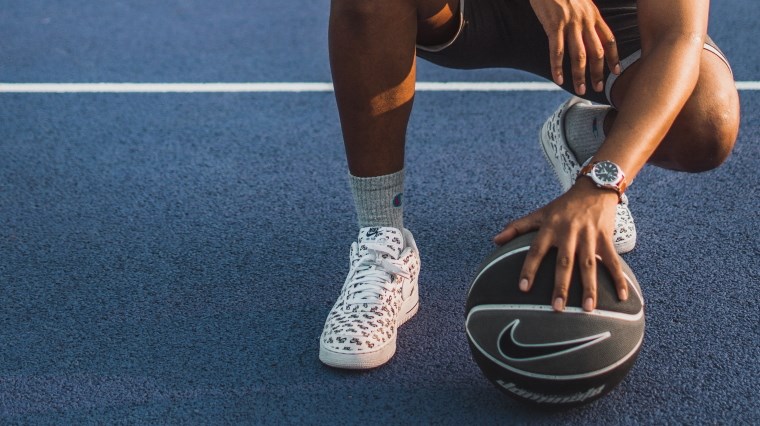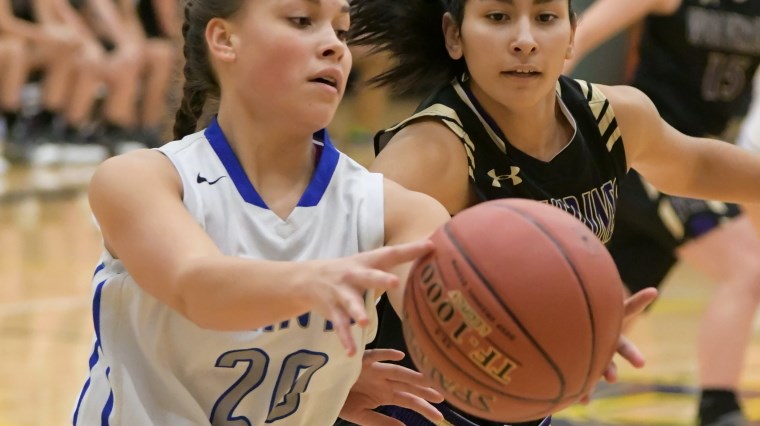How To Choose A Basketball

When kick-starting a new sport like basketball it’s important to buy the right equipment that’s personalised to your age, skill level and playing surface.
Besides having the best basketball shoes, the basketball you choose to train with at home or on the local court can influence your ball control, grip and potentially whether or not you develop incorrect technique such as poor hand alignment. For junior players, too large or heavy a basketball can even increase risk of injury.
Practicing with the right ball from the get-go will keep you motivated and on track of your training. Choosing a basketball is not only a matter of purchasing the correct size but weighing up the price point, durability and feel.
Size: Your age and hand span

Your age and hand span/size can influence what size basketball is best for you. The size of the basketball defines its circumference and standard weight.
Size 7
Size 7 is the official size game ball of the NBA and is used by amateur to professional players. Being full size it is suitable for men as they generally have larger hand spans than female players.
Recommended for: Male players aged 14 years old and up
Circumference: 75cm / 29.5in
Standard weight: 624g / 22oz
Size 6
Size 6 is the official size basketball for the majority of professional basketball leagues for female players including the Women’s National Basketball League (WNBL). They’re also a popular choice for high school, university basketball leagues or men with smaller hand spans.
Recommended for: Female players 12 years old and up and male players aged 12 - 14 years old
Circumference: 72.5cm / 28.5in
Standard weight: 567g / 20oz
Size 5
Size 5 basketballs or junior basketballs are suitable for children and youth leagues, with a smaller circumference to allow small hand sizes to grip the ball comfortably and securely.
Recommended for: Junior players aged 8 - 11 years old
Circumference: 70cm / 27.5in
Standard weight: 397g – 170g / 14 – 16oz
Size 4
Size 4 offers a lightweight and small basketball for young boys and girls to develop their court skills.
Recommended for: 4 - 8 year old children
Circumference: 65cm / 25.5in
Standard weight: 397g / 14oz
Size 3
The size 3 or ‘mini’ basketball can kick-start the passion for sport and improve coordination in very young children or be used as a novelty ball.
Recommended for: Children aged 3 years and up
Circumference: 56cm / 22in
Standard weight: 283.5g / 10oz
Material: Your Playing Surface

Do your find yourself shooting hoops on the local outdoor court or dribbling on the hardwood indoors?
Outdoor courts are naturally harder and more abrasive than indoor courts, putting more stress on the basketball during repetitive contact. The covers on outdoor basketballs are designed to withstand the elements such as moisture and resist dirt build-up.
Using an indoor ball on an outdoor court will dramatically reduce its lifespan and playability.
Leather
Genuine leather basketballs are most commonly seen in the hands of professional league players seeking zero compromise to feel and comfort. However, they do require a ‘break-in’ period before the feel is optimised for play. When preparing for games at an elite level this can take up to 3 months.
Used for the NBA and WNBA, these indoor-only basketballs are at high risk of tearing and degrading quickly when used on outdoor courts – and that includes driveways. The softer, suppler material ensures they don’t damage indoor court surfaces during training and competition. They do absorb moisture and sweat – providing more controlled grip and less slippage when the competition heats up.
With a price point that’s significantly higher (due to the premium materials and cost of manufacture) than their synthetic or rubber cousins, they’re best for serious players only that will put the time into basketball maintenance and ensuring the ball stays dry.
Composite basketball (synthetic)
Composite basketballs also called ‘hybrid’ balls are a popular choice for most players. The synthetic material (composite leather) surpasses natural leather basketballs in durability, making them versatile for indoor and outdoor courts yet are less expensive to produce.
Composite leather has a leather-like feel and offers improved shape retention compared to their natural counterparts. This durable material allows you to skip the ‘break-in’ phase needed for leather basketballs, with improved consistency in playability between composite basketballs of the same type. This is important when it comes to factors such as bounce quality.
Although many are suitable for both indoor and outdoor play, harder outdoor surfaces will wear down the basketball more quickly than on the hardwood, especially if used on driveways. Some composite basketballs are for indoor only, so it’s important to buy the right ball for the right surface and stick with a multi-court ball if that’s what you need. Softer basketballs translate to improved grip and feel, with the trade-off being less durability.
Although they aren’t sweat absorbent in the same way as a genuine leather ball, some feature moisture-wicking channels to meet the demands of the modern game, ensuring less compromise to your grip. They are easy to maintain (if any maintenance is required at all) making them an ideal option for players of all levels.
Composite basketballs come in a variety of colours, but choose a standard orange coloured ball if you're playing at a competitive level.
Rubber
Rubber or ‘street’ basketballs are the most budget-conscious option yet are highly versatile. They’re usually reserved for outdoor play, with the durability to tackle changing weather conditions and to resist abrasions from metal nets. The grip isn’t overly compromised by rain or dirt. They’re available with a variety of vivid colours and graphics to improve ball tracking – making them ideal for recreational play and street basketball.
Due to their affordability, rubber basketballs are ideal for entry-level players looking to dip their toes into the sport for the first time. However, it’s important to choose from a name brand like Spalding or Nike or you risk buying a basketball that is not only budget-friendly, but poor quality.
There aren’t many limits on what surface a rubber basketball can be used on – concrete, gravel and other hard or rough surfaces won’t chew into them as they would a leather ball. Being waterproof, they’re even used for ‘pool basketball’ with the family. On indoor courts however, rubber basketballs can cause excessive bounce, interfering with your control but you can help balance this out by releasing more air pressure.
Feel is where rubber basketballs are lacking. No surprises here, a rubber basketball feels rubbery, has larger pebbling and is harder than other options. If you’re new to the sport, just looking for a muck-around ball with the kids or a basketball for grade-schoolers, it’s perfectly fine, but for a pleasing, close-to-leather feel a composite basketball is the way to go.
Happy basketball and we’ll see you on the court.
